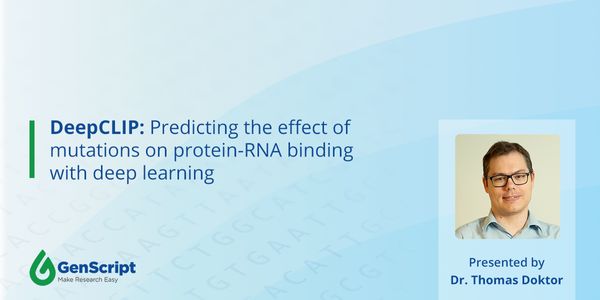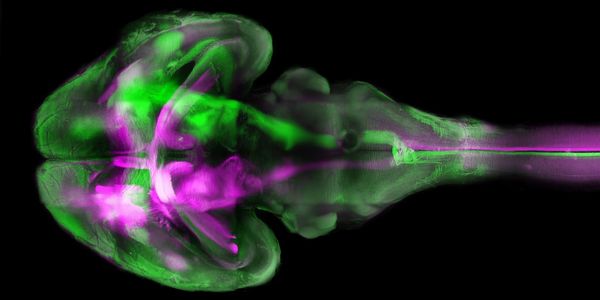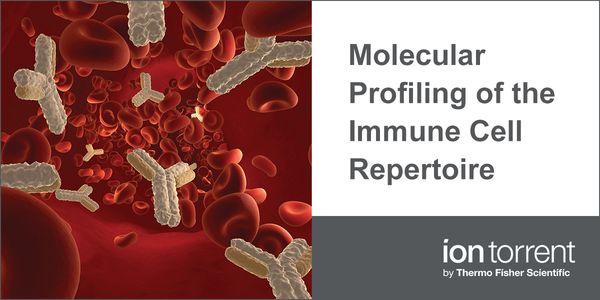Biostatistics
Biostatistics: the application of statistics to a wide range of topics in biology. The science of biostatistics encompasses the design of biological experiments, especially in medicine, pharmacy, agriculture and fishery; the collection, summarization, and analysis of data from these experiments; and the interpretation of, and inference from, the results.
-
MAY 31, 2023 | 10:00 AMDate: May 31, 2023 Time: 10:00am (PDT), 1:00pm (EDT), 5:00pm (CEST) Bloodstream infections (BSIs) are defined as a systemic infection resulting from the presence of viable microorganisms in...JUN 21, 2022 | 6:00 AMDate: June 21, 2022 Time: 6:00am (PDT), 9:00am (EDT), 3:00pm (CEST) The global understanding and practice of medicine is currently undergoing a revolutionary change. This shift to precision...Speaker: Zisis Kozlakidis , David Hanna , Dr. Yehudit Cohen , Sowmiya Moorthie , Shai CarmiSponsored By: Thermo Fisher ScientificMAY 31, 2022 | 9:00 AMDate: May 31, 2022 Time: 9:00am (PDT), 12:00pm (EDT), 6:00pm (CEST) Introducing Nanostring’s latest spatial platform, CosMx Spatial Molecular Imager (SMI). Offering high-plex, multiomi...The human genome encodes 25,000 genes. But the biological complexity inherent in polygenic traits is a clear sign that the whole is greater than the sum of its parts. Genes, gene products, a...
Understanding the order in which mutations accumulate during cancer progression could help us identify effective therapeutic targets. Yet, our insights are limited by the fact that we can on...
Targeted stimulation of the brain has the potential to treat mental illnesses but designing an appropriate protocol requires a multitude of choices. I will describe an approach to help desig...
Date: May 18, 2021 Time: 7:00am PDT, 10:00am EDT Proteins encoded by mutant genes in cancers can be processed and presented on tumor cell surface by human leukocyte antigen (HLA) molecules,...
MAY 11, 2021 | 10:00 AM
Date: May 11, 2021 Time: 10:00zm PDT Your samples are some of the most valuable assets in the laboratory. After spending countless hours on extraction and preparation, your conclusions could...
Speaker:
Paulina Kocjan
, Kate Meola
, Zareh Zurabyan
In mammals, DNA methylation is an epigenetic mark that regulates gene expression by serving as a maintainable mark whose absence marks promoters and enhancers. Recent epidemiological studies...
FEB 24, 2021 | 7:00 AM
Date: February 24, 2021 Time: 7:00am (PST) Nucleotide variants can cause functional changes by altering protein–RNA binding in various ways that are not easy to predict. This can affec...
DEC 15, 2020 | 10:00 AM
DATE: December 15, 2020 TIME: 10:00am PST Scientists from Thermo Fisher Scientific will walk us through the world of microorganisms. They will discuss their most recent research on viruses,...
Speaker:
Sasha Vlassov, PhD
, Jasti Madhu
, Emily Zeringer
Sponsored By: Thermo Fisher Scientific
NOV 18, 2020 | 8:00 AM
DATE: November 18, 2020 TIME: 08:00am PDT We develop and implement technologies to solve some of the major bottlenecks in biomedical research. In particular, we establish new imaging approac...
Learning Objectives: 1. Understand the evolving epidemiology of prostate cancer in the the US and globally, and the excess burden of disease borne by men of African ancestry 2. Describe the...
Speaker:
Matthew R. Cooperberg, MD
Single-cell mass cytometry identifies mechanisms of resistance to immunotherapy in AML 6:30–7:00 am PDT Presented By: Shelley Herbrich, PhD Understanding CD19 negative relapse followin...
Speaker:
Shelley Herbrich, PhD
, Kara L. Davis, DO
, Bernd Bodenmiller, PhD
Presented at: 9th Annual Fluidigm Mass Cytometry Virtual Summit
JUL 22, 2020 | 10:00 AM
DATE: July 23, 2020 TIME: 10:00 am PDT The SARS-CoV-2 pandemic has taken a toll on many sectors of the medical community. As the pandemic took a grip on the laboratory, the need for diagnost...
Designing a good QC plan can be a daunting task. These simple recommendations can provide guidance to the lab and are essential to include in a good QC plan. They have been used and proven e...
























